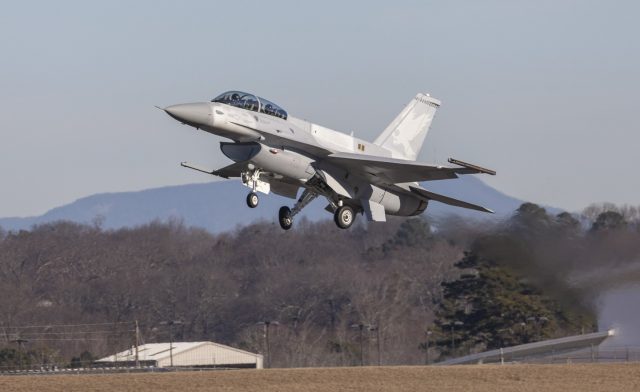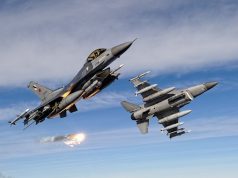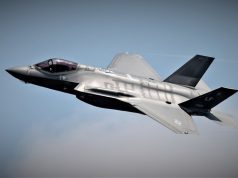Lockheed Martin announced on January 24 the successful first flight of the F-16 Block 70 at its Greenville, South Carolina site.
The first flight took place with Lockheed Martin test pilots Dwayne “Pro” Opella and Monessa “Siren” Balzhiser at the helm. Total flight time was approximately 50 minutes and included airworthiness checks, such as engine, flight control and fuel system checks, as well as basic aircraft handling.
“Today’s successful flight is a testament of the hard work, dedication and commitment to our customers and their missions,” said OJ Sanchez, vice president, Integrated Fighter Group, which includes the F-16 program. “This milestone demonstrates Lockheed Martin’s commitment to advancing this program and getting this much-needed aircraft and its advanced 21st Century Security capabilities to the warfighter.”
This F-16 Block 70 jet is the first of 16 jets to be delivered to Bahrain. Six countries have selected Block 70/72 aircraft. In addition to the current official backlog of 128 jets to-date to be built in Greenville, Jordan last year signed a Letter of Offer and Acceptance (LOA) for eight jets and last week signed an additional LOA for four more jets. Lockheed Martin has received a contract to begin Jordan’s long-lead activities. Bulgaria has also signed an LOA for an additional eight jets for its fleet. Once these are finalized, the backlog will increase to 148.
The Block 70/72 features a new, high resolution center pedestal display (CPD), which provides critical tactical imagery to pilots and allows them to take full advantage of AESA and targeting pod data. The new CPD enables color moving maps, larger and easier to manage air-to-air situation displays, zoom functionality with the ability to switch information among displays, digital display of flight instrument data, and a color/night helmet mounted display.
The Block 70/72 also has an extended structural life to 12,000 hours – more than 50 percent beyond that of previous production F-16 aircraft.
A new advanced APG-83 AESA radar delivers greater situational awareness, flexibility and quicker all-weather targeting. Lockheed says the APG-83 provides F-16s with 5th generation fighter radar capabilities by leveraging hardware and software commonality with F-22 and F-35 AESA radars. The AESA is being integrated with a new active and passive internal electronic warfare system (Viper Shield), which incorporate a new fully Digital Radar Warning Receiver (DRWR) designed to interface with the APG-83 radar.
“Lockheed Martin is fully committed to delivering quality platforms for our customers’ critical missions, and I am so proud of our talented team in Greenville,” said Danya Trent, F-16 Vice President and Site Lead in Greenville. “This is the culmination of significant development, design, digital engineering, supply chain and production line advances to an already proven platform that will continue to deliver decades of service in support of customers’ national security.”



























